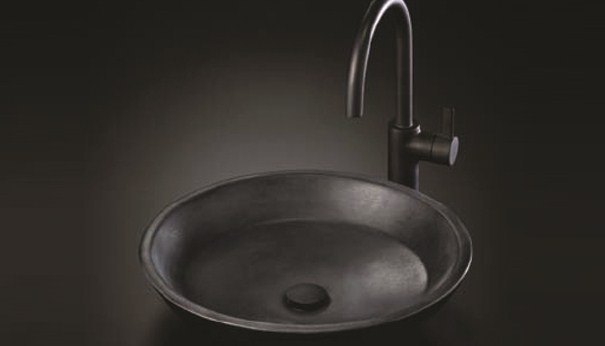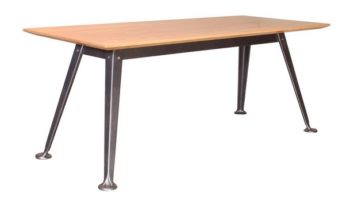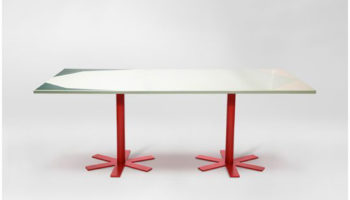At #IIDEX09: Toto’s Waza Noir Collection Finds Inspiration in Japanese “Sumi”
Like predecessors Tsunami, Fold, and Colorado 13, the Waza Noir “Sumi” by Toto embraces the play of water by greeting it with luxurious curves, by embracing it in the smooth contours of a definitive materiality. Unlike the former, however (crafted from steel, marble, and marble respectively), Toto’s latest employs the rather unconventional cast iron as the palette on which to paint its aqueous pictures.
Sumi. Designed by Toto for Waza Noir.
The conceit of Sumi is that its monochrome hue (a range that spans from dark black to darker black) is modeled after the revered art of Japanese calligraphy, whose traditional black inks—or “sumi”—are made by hand-mixing water with blocks of black pigment. The Waza Noir collection thus resonates with time-honored Japanese craftsmanship. Each of the three pieces boasts modern lines yet embraces the aged patina of an ancient temple or a gleaming samurai sword. The sinks have the same super-smooth sheen of Fold or Tsunami, yet also display the natural subtle undulations of the cast iron. The result is an appealing synthesis of old and new, perhaps most evidenced in the asynchronous self-rimming lavatory. This combo sink/faucet is a celebration of contrasts, between “the varying shapes of a circle and rectangle… within the transition from a glossy to matte finish.”


From Yin and Yang to Yin, the rectangle lavatory is a subtle paean to this most geometric of shapes, though this particular rectangle is an elegant three-dimensional affair: “inspired by traditional paper sculpting techniques, the lavatory’s gentle slope creates gradients of shadows and illuminations.” Lastly, the Vessel Lavatory is pure Yang, its silhouetted circular profile expressing all the beauty and mystery of nature’s most enigmatic shape.
Differences aside, each of the three Waza Noir lavatories employs Sumi such that a mere sink is transformed into a bona fide art piece. And filled to the brim with life-giving H20, the effect is increased 10-fold—the collection gives new meaning to the time-worn aphorism, “still waters run deep.”




Leave a Reply